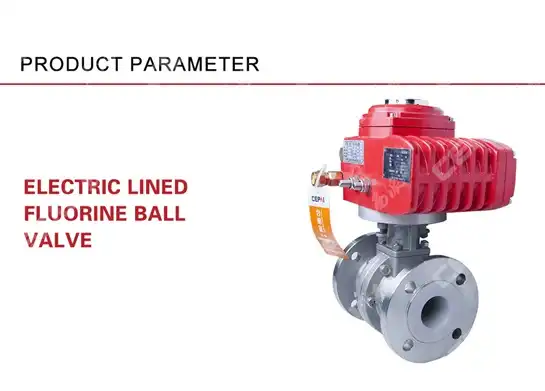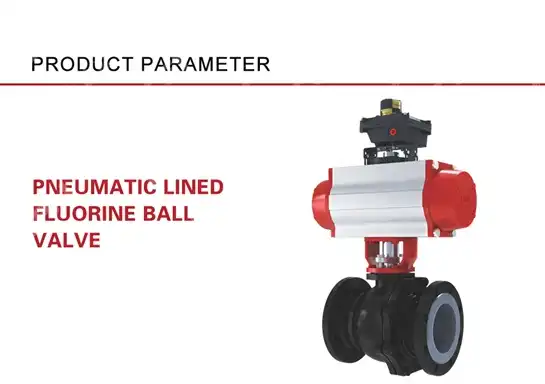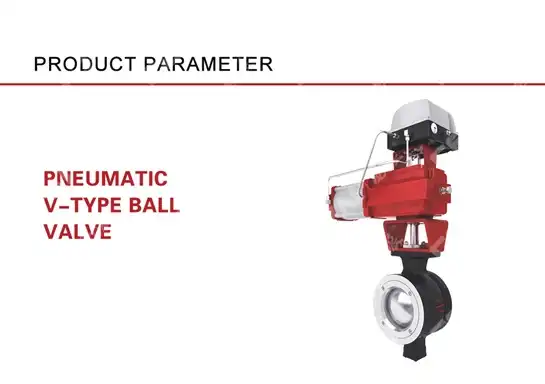Ball Valve Buyer’s Checklist: Features to Consider Before Purchase
Selecting the wrong ball valve for your industrial system can lead to catastrophic failures, unexpected downtime, and costly repairs that drain your operational budget. Whether you're managing a petrochemical facility, power generation plant, or oil and gas operation, understanding the critical features of a ball valve before making a purchase decision is essential to ensuring system reliability, safety, and long-term performance. This comprehensive buyer's checklist will guide you through the essential considerations when selecting a ball valve, helping you make informed decisions that protect your investment and optimize your operations.
Understanding Ball Valve Material Specifications and Compatibility
-
Material Selection Based on Operating Conditions
The foundation of any reliable ball valve begins with proper material selection. When evaluating ball valve options, the body and internal component materials must withstand the specific media, temperature ranges, and pressure conditions of your application. Industrial ball valves are typically manufactured from stainless steel, carbon steel, brass, or specialized alloys, each offering distinct advantages. For petrochemical applications handling corrosive media, stainless steel ball valves with enhanced corrosion resistance provide superior longevity. The valve body material directly impacts performance in harsh environments where chemical compatibility is paramount.
-
Seal and Seat Material Considerations
Beyond the valve body, the sealing elements represent critical wear points that determine service life. Ball valve seats and seals manufactured from PTFE, reinforced PTFE, or metal-to-metal configurations offer varying degrees of temperature tolerance and chemical resistance. When selecting a ball valve, consider whether soft-seated or metal-seated designs better suit your operational parameters. High-temperature applications exceeding 400°F typically require metal-seated ball valves, while standard industrial processes benefit from the tight shut-off capabilities of soft-seated configurations. The seal material compatibility with process fluids prevents premature degradation and maintains system integrity.
-
Corrosion Resistance and Environmental Factors
Environmental exposure significantly influences ball valve material requirements. Offshore oil and gas installations demand ball valves with superior corrosion resistance to withstand saltwater exposure and harsh marine conditions. Ball valve manufacturers offering specialized coatings and surface treatments extend equipment lifespan in challenging environments. Evaluate whether your application requires additional protection through electroplating, nitriding, or specialized coatings that enhance corrosion resistance beyond base material properties. This consideration becomes particularly important in hydrogen sulfide service or sour gas applications where material selection directly impacts safety.

Pressure and Temperature Rating Requirements for Ball Valves
-
Understanding Pressure Class and Working Ratings
Pressure ratings represent one of the most critical specifications when purchasing a ball valve. The valve must safely contain system pressures under both normal operating conditions and potential surge scenarios. Ball valves are classified by pressure classes such as ANSI 150, 300, 600, 900, 1500, and 2500, corresponding to maximum allowable working pressures at specific temperatures. When specifying a ball valve, always verify that the rated working pressure exceeds your system's maximum operating pressure with an appropriate safety margin. Undersized pressure ratings lead to valve failure, while oversized specifications unnecessarily increase costs.
-
Temperature Tolerance and Performance Degradation
Temperature significantly affects ball valve pressure ratings and material properties. A ball valve rated for 1480 PSI at ambient temperature may only handle 740 PSI at 500°F due to material strength reduction at elevated temperatures. Understanding the pressure-temperature relationship ensures safe operation across your system's thermal range. High-performance ball valves from reputable manufacturers provide detailed pressure-temperature charts documenting these relationships. Additionally, thermal cycling can cause expansion and contraction that affects sealing performance, making temperature considerations essential for applications experiencing frequent thermal variations.
-
Cryogenic and High-Temperature Applications
Specialized applications demand ball valves engineered for extreme temperature conditions. Cryogenic ball valves for LNG service must maintain sealing integrity at temperatures reaching -320°F, requiring specialized materials and extended bonnet designs that protect stem packing from extreme cold. Conversely, high-temperature ball valves serving steam systems or thermal oil applications need materials and seat designs that prevent thermal degradation. When evaluating ball valve options for extreme temperature service, verify that manufacturers provide documented testing results confirming performance under your specific thermal conditions.

Ball Valve Port Configuration and Flow Characteristics
-
Full Port versus Reduced Port Designs
Port configuration dramatically impacts flow capacity and pressure drop across a ball valve. Full port ball valves feature bore diameters matching the pipeline size, providing unrestricted flow with minimal pressure loss. This design proves essential in applications where pressure drop must be minimized or where pigging operations require unobstructed passage. Reduced port ball valves, offering bore diameters approximately one size smaller than the connection, provide cost savings while maintaining adequate flow for many applications. When selecting between configurations, calculate whether the increased pressure drop of reduced port designs affects system performance or energy consumption.
-
Multi-Port Ball Valve Configurations
Complex piping systems often benefit from multi-port ball valve designs offering three-way or four-way flow patterns. These specialized ball valves enable flow diversion, mixing, or isolation of multiple flow paths using a single valve assembly. Three-way ball valves in L-port or T-port configurations provide flexible flow routing for applications requiring media switching or blending. When evaluating multi-port ball valves, carefully map flow patterns to ensure the valve configuration matches your process requirements. Incorrect port configuration selection can restrict flow or create unintended flow paths that compromise system operation.
-
V-Port Ball Valves for Flow Control
While standard ball valves provide on-off service, V-port ball valves offer throttling capabilities for flow control applications. The V-shaped ball design provides characterized flow curves enabling precise flow modulation. Applications requiring both shut-off and control capabilities benefit from V-port ball valve designs that eliminate the need for separate control valves. When considering V-port configurations, evaluate whether the control characteristics match your process requirements and whether automated actuation enhances operational flexibility. These specialized ball valves bridge the gap between standard on-off valves and dedicated control valves.
Actuation Methods and Operational Requirements
-
Manual Operation Considerations
Manual ball valves utilizing lever handles or gear operators provide reliable, cost-effective solutions for accessible locations with infrequent operation. Lever-operated ball valves offer quick quarter-turn operation ideal for emergency shut-off applications. However, larger ball valves require gear operators to reduce the torque needed for operation. When specifying manual ball valves, consider whether operators can safely access and operate the valve, particularly for elevated or confined locations. Gear-operated ball valves enable control of large-diameter valves while maintaining reasonable operating forces.
-
Automated Actuation Options
Automated ball valves equipped with pneumatic, electric, or hydraulic actuators enable remote operation, rapid response, and integration with control systems. Pneumatic actuators provide fast operation and fail-safe capabilities through spring-return designs, making them ideal for emergency shutdown systems. Electric actuators offer precise positioning for throttling applications and eliminate compressed air requirements. When selecting actuated ball valves, evaluate power source availability, response time requirements, and fail-safe position needs. The actuator selection must provide sufficient torque to overcome valve breakaway torque and maintain sealing force throughout operation.
-
Smart Valve Technology and Monitoring
Advanced ball valve packages incorporate intelligent positioners, diagnostics, and communication protocols enabling predictive maintenance and performance monitoring. Smart ball valves provide real-time feedback on valve position, cycle counts, and operational anomalies that indicate developing problems. When investing in critical process ball valves, consider whether smart valve technology reduces downtime through early problem detection. Integration with plant DCS or SCADA systems enables centralized monitoring and data collection supporting reliability programs. These capabilities prove particularly valuable in unmanned facilities or hazardous areas where personnel access is restricted.
Quality Certifications and Manufacturing Standards
-
API and Industry Standard Compliance
Reputable ball valve manufacturers maintain certifications to industry standards demonstrating design, manufacturing, and testing compliance. API 6D certification for pipeline ball valves and API 6A for wellhead service ball valves establish minimum requirements for oil and gas applications. When evaluating ball valve suppliers, verify compliance with relevant standards including API, ASME, ISO, and industry-specific requirements. China ball valve manufacturers achieving international certifications demonstrate commitment to quality management and production control. CEPAI Group maintains comprehensive certifications including API Q1, API 6A, API 6D, and API 16C, ensuring products meet stringent petroleum industry requirements.
-
Quality Management System Verification
Beyond product certifications, manufacturer quality management systems indicate process control and consistency. ISO 9001 certification establishes quality management frameworks, while ISO 14001 addresses environmental management. Ball valve manufacturers with CNAS laboratory accreditation possess in-house testing capabilities ensuring product verification. When sourcing ball valves from China ball valve suppliers, investigate quality system certifications and manufacturing capabilities. CEPAI Group's Jiangsu Province certifications including their CNAS nationally recognized laboratory demonstrate advanced testing and quality control infrastructure supporting high-performance ball valve production.
-
Safety Integrity Level (SIL) Certification
Safety-critical applications require ball valves with documented SIL certification confirming reliability calculations and failure mode analysis. SIL-rated ball valves meeting IEC 61508 and IEC 61511 standards provide quantified safety performance suitable for safety instrumented systems. When specifying ball valves for emergency shutdown or pressure relief applications, verify that manufacturers provide SIL certification documentation including proven-in-use data. Ball valve SIL certification from accredited bodies ensures proper engineering analysis supports the safety function. CEPAI Group offers SIL-certified ball valves backed by rigorous testing and reliability data.
Conclusion
Selecting the appropriate ball valve requires careful evaluation of material compatibility, pressure-temperature ratings, port configuration, actuation requirements, and quality certifications. By following this comprehensive buyer's checklist, you can ensure your ball valve selection meets operational demands while providing reliable, long-term performance. The investment in proper valve specification prevents costly failures and optimizes system efficiency across your industrial operations.
Cooperate with CEPAI Group Co., LTD.
As a leading China ball valve manufacturer, CEPAI Group Co., LTD. delivers high-quality ball valves backed by extensive certifications and advanced manufacturing capabilities. Our China ball valve factory operates the longest high-precision intelligent manufacturing flexible production line in the Asia-Pacific region, ensuring exceptional quality control and consistent production standards. With API certifications, SIL ratings, and comprehensive quality management systems, CEPAI stands as your trusted China ball valve supplier for demanding applications across petrochemical, power generation, and oil and gas industries.
Our competitive ball valve price points don't compromise quality—we maintain strict ISO quality systems throughout production while offering ball valves for sale that meet international standards. When you choose CEPAI as your China ball valve wholesale partner, you gain access to technical consultation, customized solutions, installation support, and responsive after-sales service. Our high quality ball valves serve major clients including PetroChina, Sinopec, CNOOC, and leading international engineering companies, demonstrating proven performance in critical applications.
Ready to specify the right ball valve for your project? Contact CEPAI Group today at cepai@cepai.com for technical consultation and quotations. Our engineering team provides detailed valve selection guidance ensuring optimal performance for your specific application. Visit our comprehensive product catalog to explore our full range of ball valve solutions, and bookmark this checklist for future reference when evaluating your next valve purchase. Don't let valve selection uncertainty delay your project—partner with CEPAI Group for reliable, high-performance ball valve solutions.
References
1. Valve Manufacturers Association of America. "Valve Specifying Checklist." VMA Technical Guidelines for Industrial Valve Selection.
2. American Petroleum Institute. "API 6D: Specification for Pipeline and Piping Valves." API Standards for Valve Manufacturing and Testing.
3. International Society of Automation. "ISA-75.25.01: Test Procedure for Control Valve Response Measurement from Step Inputs." ISA Control Valve Standards.
4. Zappe, R.W. "Valve Selection Handbook: Engineering Fundamentals for Selecting the Right Valve Design for Every Industrial Flow Application." Gulf Professional Publishing.
_1746598557316.webp)
Get professional pre-sales technical consultation and valve selection services, customized solution services.

About CEPAI


